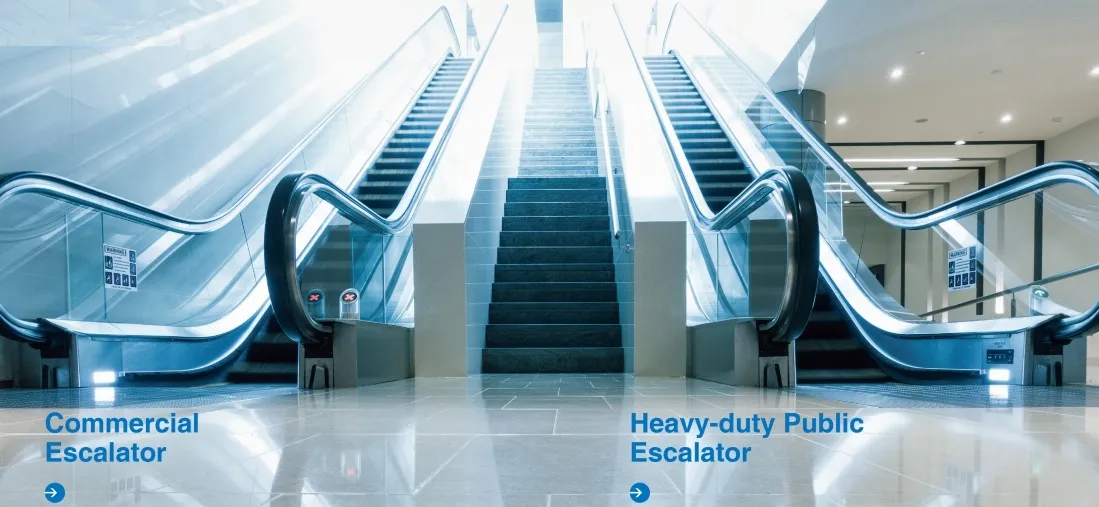You're standing in a bustling airport terminal, watching people flow seamlessly between levels like water downstream. Ever wonder what makes that vertical dance possible? The unsung heroes behind this urban ballet are commercial escalators - and choosing the right brand makes all the difference between frustration and frictionless movement.
Here's the thing: Your escalator choice impacts everything from energy bills to passenger safety. We've scrutinized innovation, reliability, and sustainability to bring you the definitive guide to 2025's top performers. Whether you're outfitting a shopping mall, transit hub, or corporate tower, these are the brands that deliver when the stakes are high.
Why Your Escalator Choice Matters More Than Ever
Gone are the days when escalators were just moving stairs. Today's commercial models are smart, connected, and surprisingly eco-friendly. As cities grow denser and mobility demands increase, your escalator becomes:
- A brand statement - Sleek designs create powerful first impressions
- An energy manager - Top models cut power consumption by 30-50%
- A data collector - IoT sensors predict maintenance before breakdowns
- A safety guardian - AI-enhanced obstacle detection prevents accidents
And with sustainable architecture now dominating commercial projects, low-carbon solutions like Schmidt Elevator's solar-compatible systems are becoming non-negotiable.
The Tech Revolution in Vertical Transport
AI-Powered Efficiency
KONE's "People Flow" system uses AI to adjust speed based on real-time traffic patterns, reducing idle energy drain. Imagine escalators that wake up before rush hour!
Green Mobility
Schindler's regenerative drives capture kinetic energy and feed it back to the grid. Like electric cars, modern escalators now give back to the system.
Touchless Journeys
Post-pandemic innovations include UV-C light disinfection systems built into handrails and motion-activated operation.
The 2025 Commercial Escalator Elite
Otis Elevator Company
When Elisha Otis invented the safety elevator in 1853, he sparked a revolution. Fast forward to 2025, and the company bearing his name continues to push boundaries with:
- Gen3 escalators featuring predictive maintenance technology
- Seamless integration with building management systems
- Modular designs for rapid installation in retrofit projects
What sets Otis apart? Their global service network. When an escalator hiccups in Dubai, engineers can diagnose it from Connecticut.
ThyssenKrupp Elevator
German engineering meets Italian design in these powerhouse units. Their 2025 offerings shine in high-traffic environments like:
- Metro systems handling 100,000+ users daily
- Stadiums moving crowds during event transitions
- Hospital complexes requiring 24/7 reliability
The secret sauce? TWIN shuttle technology that lets multiple units share a single shaft. It's like a vertical subway system for people.
Schindler Group
This Swiss brand masters the art of silent efficiency. Recent installations at Zurich Airport demonstrate how they've cracked the sustainability code:
- Solar-compatible power systems reducing grid dependence
- Up to 70% energy recovery during descent operations
- Carbon-neutral manufacturing across European plants
Fun fact: Schindler escalators use recycled materials without compromising on durability - perfect for LEED-certified projects.
KONE Corporation
Finland's premier people-mover brings Scandinavian minimalism to vertical transport. Their 2025 innovations focus on:
- Ultra-flat designs for shallow installation depths
- Remote monitoring via the KONE 24/7 Connected platform
The results? Singapore's Marina Bay complex reported 22% faster passenger flow after installing KONE's smart escalator network.
Schmidt Elevator Co., Ltd.
The dark horse contender winning mega-projects across Southeast Asia. Schmidt stands out by offering:
- Complete vertical transit ecosystems (escalators + elevators)
- Monsoon-proof outdoor units with corrosion-resistant materials
- Modular systems deployable in just 72 hours
Their secret? Schmidt doesn't just install hardware - they become partners in your building's mobility strategy. As a forward-thinking building material supplier, they integrate escalators with broader architectural flows.
Beyond the Big Five
Specialized solutions for unique needs:
- Fujitec's compact spiral escalators for luxury retail
- Hyundai's extra-wide units for stadium concourses
- Sigma's budget-friendly models for municipal projects
Future-Proof Selection Checklist
Before signing any contract, ask these critical questions:
- What's the projected energy consumption at our peak usage?
- How does predictive maintenance reduce lifecycle costs?
- What cybersecurity measures protect IoT-connected units?
- Can the design accommodate future passenger volume increases?
- What are the carbon neutrality commitments?
Remember that Tokyo's Shinjuku Station learned the hard way - installing non-scalable units in 2018 cost them three times more in 2024 retrofits.
The Smart Money Perspective
While premium brands command higher upfront costs, consider these ROI factors:
| Cost Factor | Standard Unit | Premium Unit |
|---|---|---|
| Energy Consumption (10yrs) | $95,000 | $53,000 |
| Maintenance & Repairs | $64,000 | $28,000 |
| Passenger Flow Value* | - | +$180,000 |
*Based on retail conversion rate improvements from MIT Urban Mobility Lab study
The Last Step Matters Most
Great escalators disappear from consciousness - passengers glide between levels without hesitation. As urban architect Jan Gehl puts it: "The best public infrastructure facilitates effortless connection."
The brands leading in 2025 understand this fundamental truth. They're not just moving stairs; they're designing experiences that shape how people interact with your space.













